Rubric
This note is about the use of rubrics or, rather, marking guides in teaching and learning practices.
Generic advice:
Brief conceptual background on rubrics:
Turley, Eric D., and Chris W. Gallagher. ‘On the “Uses” of Rubrics: Reframing the Great Rubric Debate’. The English Journal 97, no. 4 (2008): 87–92. https://doi.org/10/gtvsxb.
A brief and influential outline of how to do rubrics:
Popham, James W. ‘What’s Wrong-and What’s Right-with Rubrics’. Educational Leadership, no. October (1997): 72–75.
A summary and analysis of critical opinions about rubrics:
Panadero, Ernesto, and Anders Jonsson. ‘A Critical Review of the Arguments Against the Use of Rubrics’. Educational Research Review 30 (2020): 100329. https://doi.org/10/gh57zc.
A sample rubric included into a review:
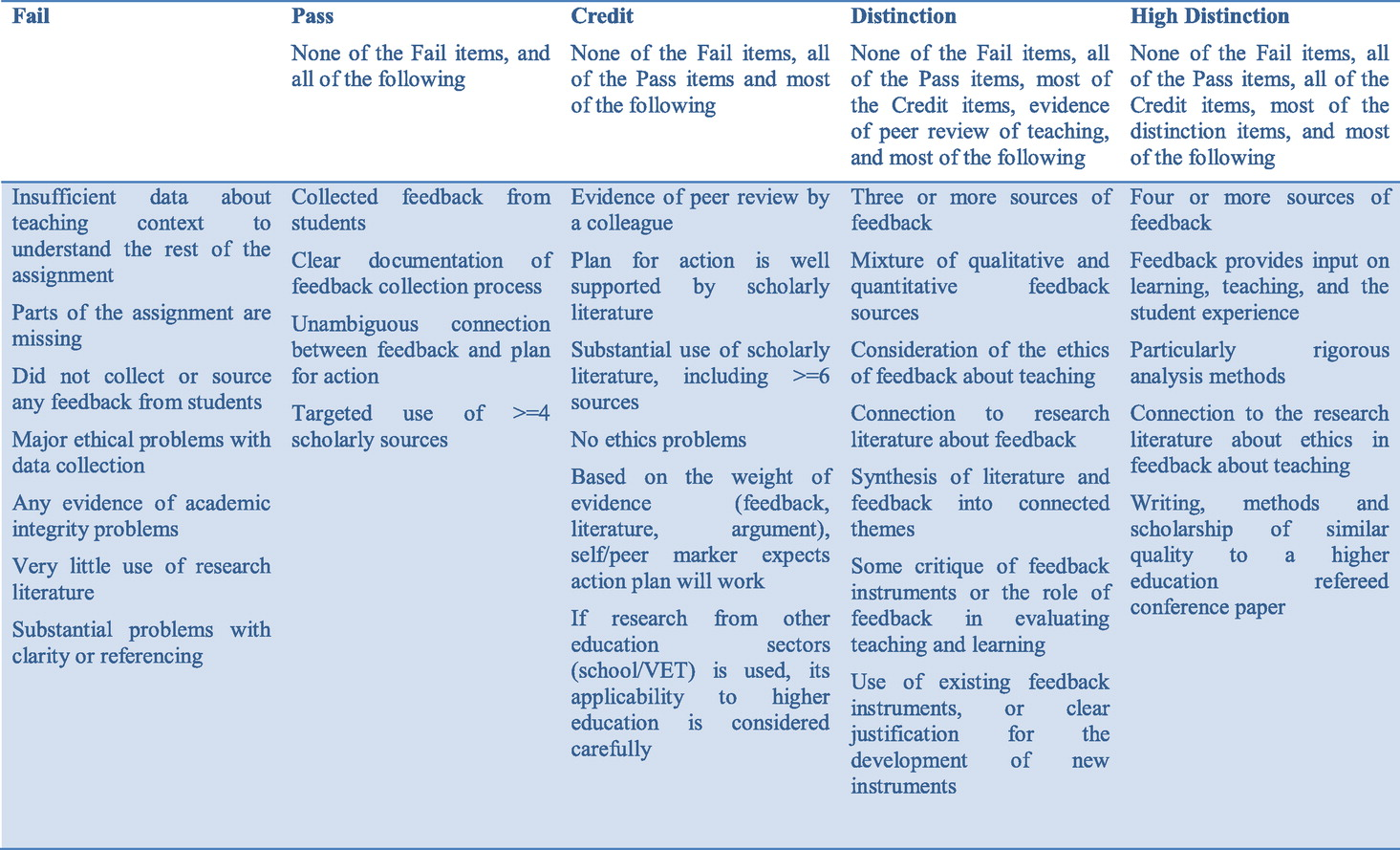
Coupled instructions for students:
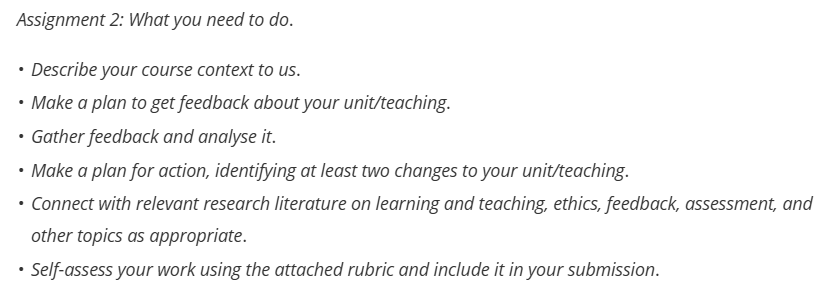
Dawson, Phillip. ‘Assessment Rubrics: Towards Clearer and More Replicable Design, Research and Practice’. Assessment & Evaluation in Higher Education 42, no. 3 (2017): 347–60. https://doi.org/10/gcphsk.
This one focuses on schools but is well considered and prioritises creative processes, which is relevant.
Critical and Creative Thinking learning continuum:
- Inquiring
- Generating
- Reflecting
- Analysing
Harris, Dan, Kathryn Coleman, and Peter J. Cook. ‘Radical Rubrics: Implementing the Critical and Creative Thinking General Capability Through an Ecological Approach’. The Australian Educational Researcher 50, no. 3 (2023): 729–45. https://doi.org/10/gtbm8t.
Student-centered learning demands progressive means of assessment that enable students to view learning as a process to develop and use strategies to meet or exceed assessment expectations. Such continuous improvement is possible only when students receive continuous, timely, objective, and constructive feedback. However, most assessment tasks provide little or no information to improve or promote student learning, but instead simply provide test scores or grades that merely quantify performance. Students need to have information about the quality of their work while they work on their assessment tasks and need to comprehend what constitutes good performance. They need to understand what excellent work is and what poor work is and be able to know what they can do to improve.
An increasing emphasis on formative assessment has fueled a push toward the use of rubrics in higher education as they focus on the criteria for quality of student work. The use of rubrics and scoring guides give students a better understanding of what is being assessed, on what criteria grades are based, and what standards are expected.
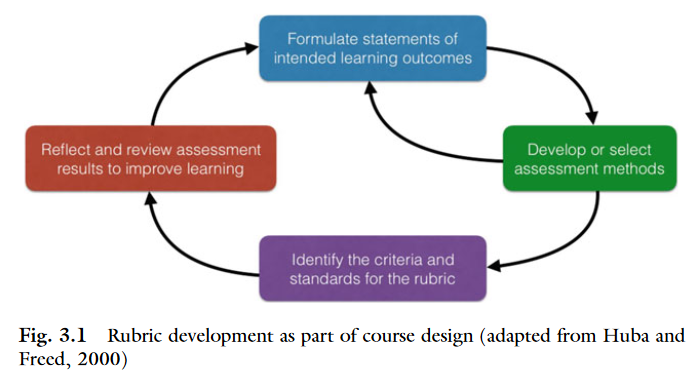
Ragupathi, Kiruthika, and Adrian Lee. “Beyond Fairness and Consistency in Grading: The Role of Rubrics in Higher Education.” In Diversity and Inclusion in Global Higher Education, edited by Catherine Shea Sanger and Nancy W. Gleason, 73–95. Singapore: Springer, 2020.
In Creative Disciplines
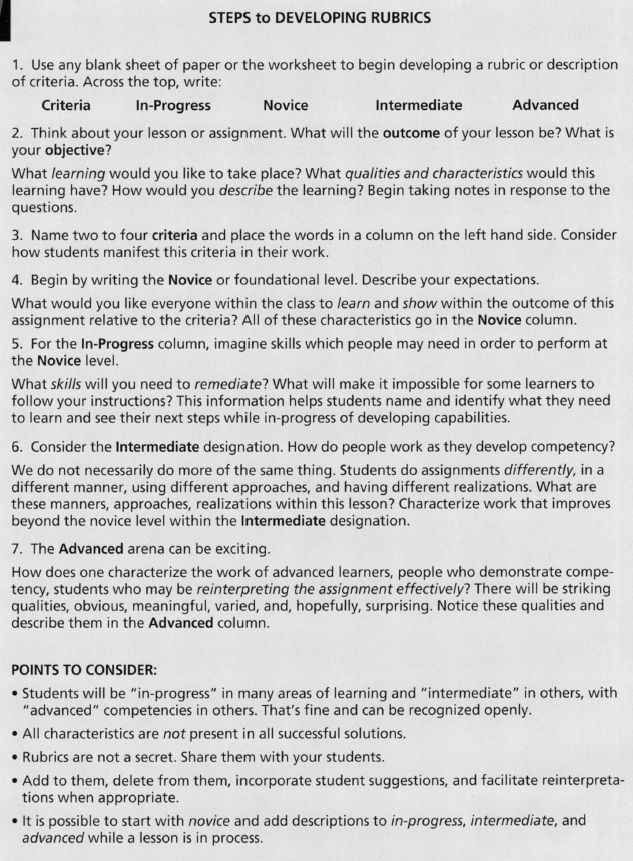
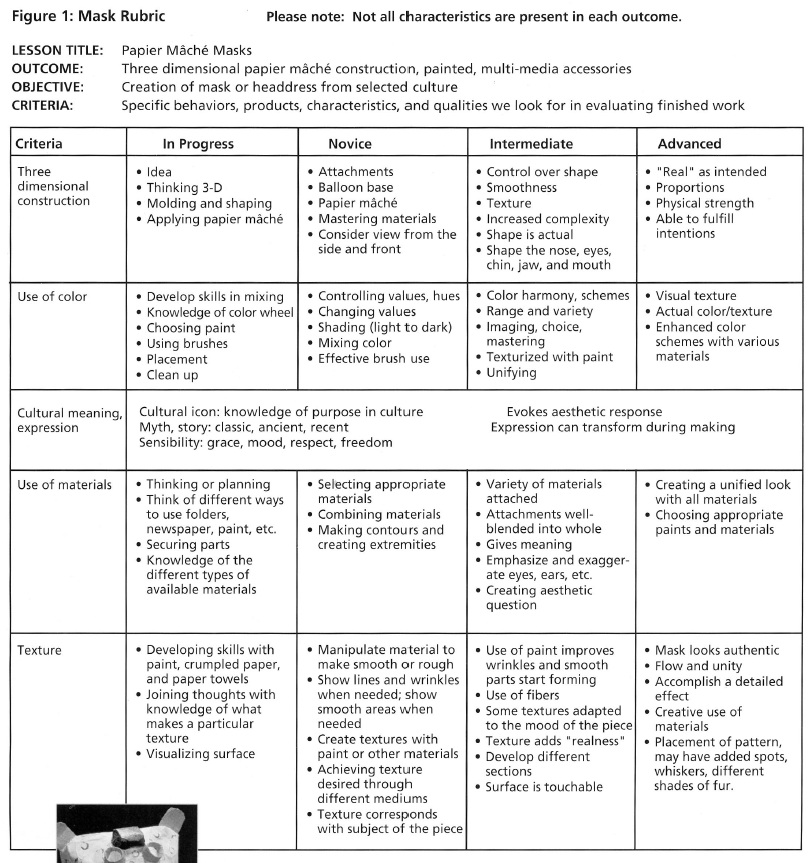
McCollister, Sandra. ‘Developing Criteria Rubrics in the Art Classroom’. Art Education, no. July (2002): 46–52.
An example of rubrics oriented towards a design process:
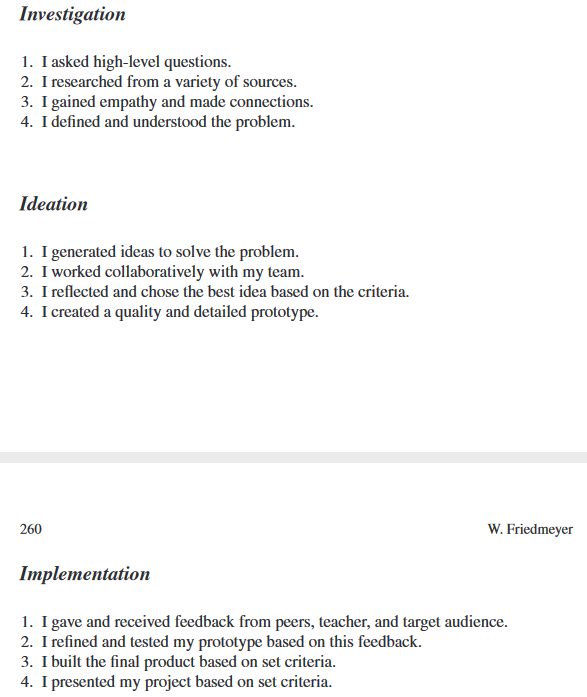
Friedmeyer, Wendy. ‘Developing a Rubric for Teaching and Assessing Design Thinking Across the Curriculum’. In Intersections Across Disciplines: Interdisciplinarity and Learning, edited by Brad Hokanson, Marisa Exter, Amy Grincewicz, Matthew Schmidt, and Andrew A. Tawfik, 255–64. Cham: Springer, 2021.
Not specifically about rubrics but on assessment in architecture and design for the overview of current practices:
Askland, Hedda Haugen, Anthony Williams, and Michael J. Ostwald, eds. Assessing Creativity: Supporting Learning in Architecture and Design. Sydney: Australian Government Office for Learning and Teaching (OLT), 2012.
References
Arter, Judith A., and Jay McTighe. Scoring Rubrics in the Classroom: Using Performance Criteria for Assessing and Improving Student Performance. Thousand Oaks: Corwin Press, 2001.